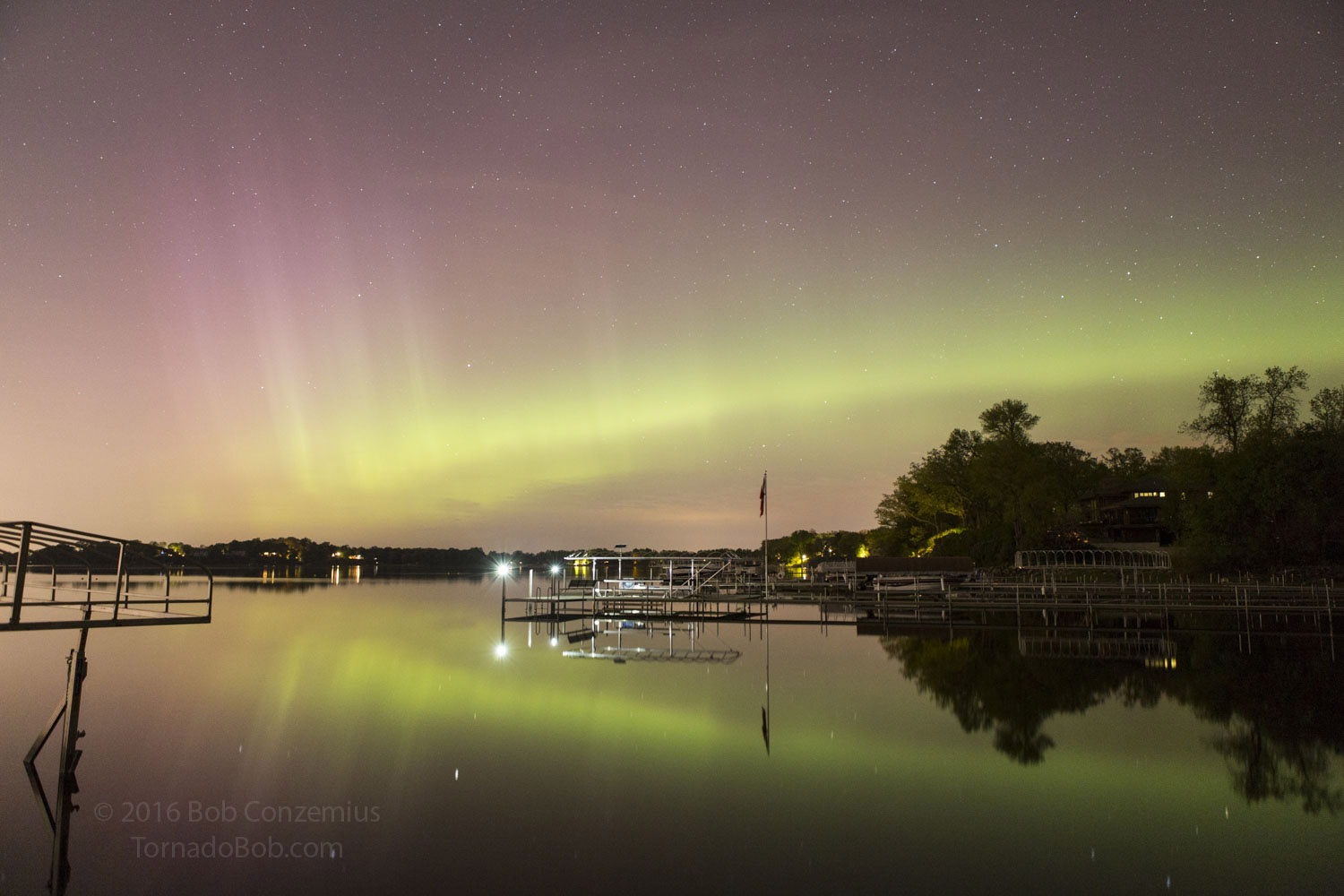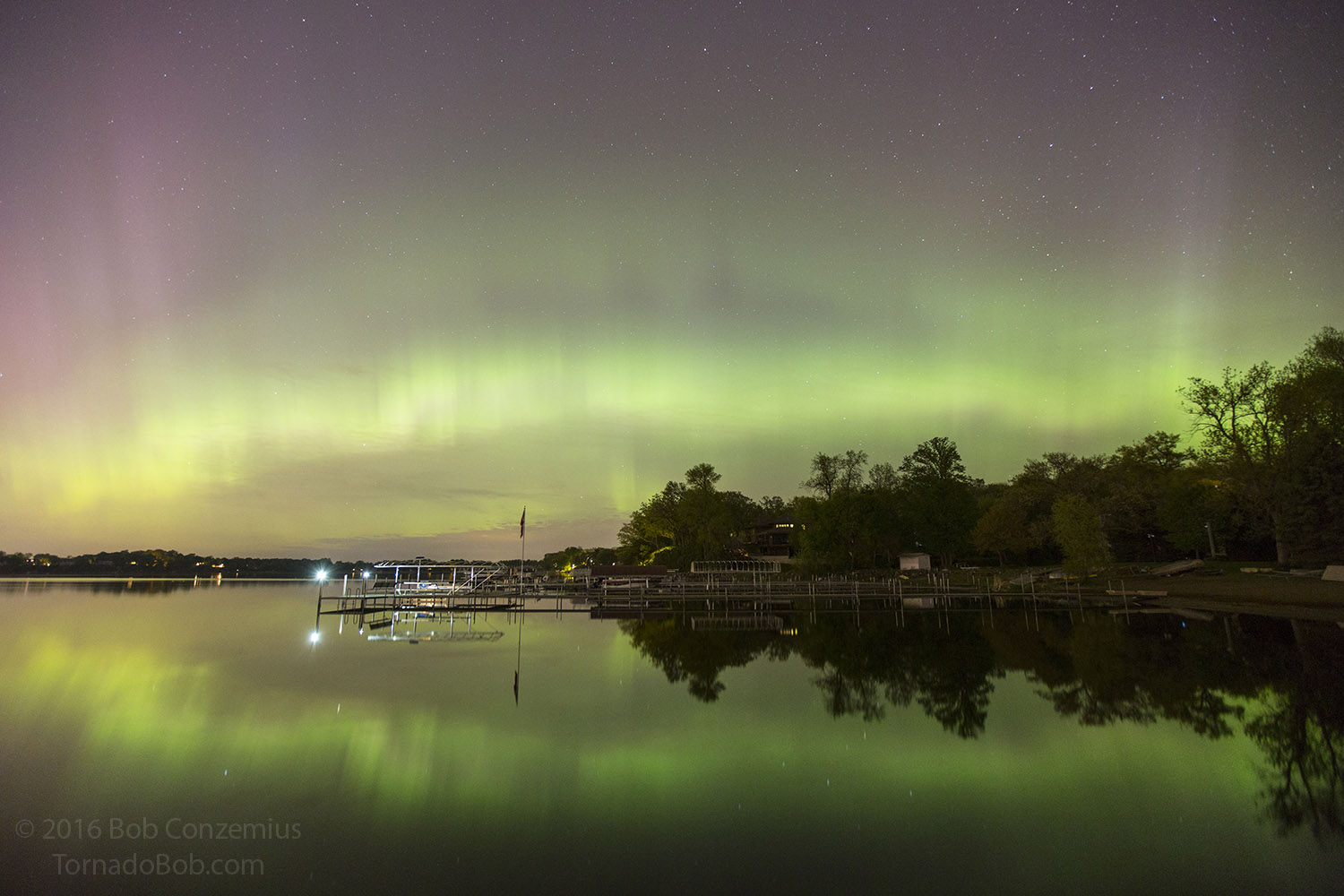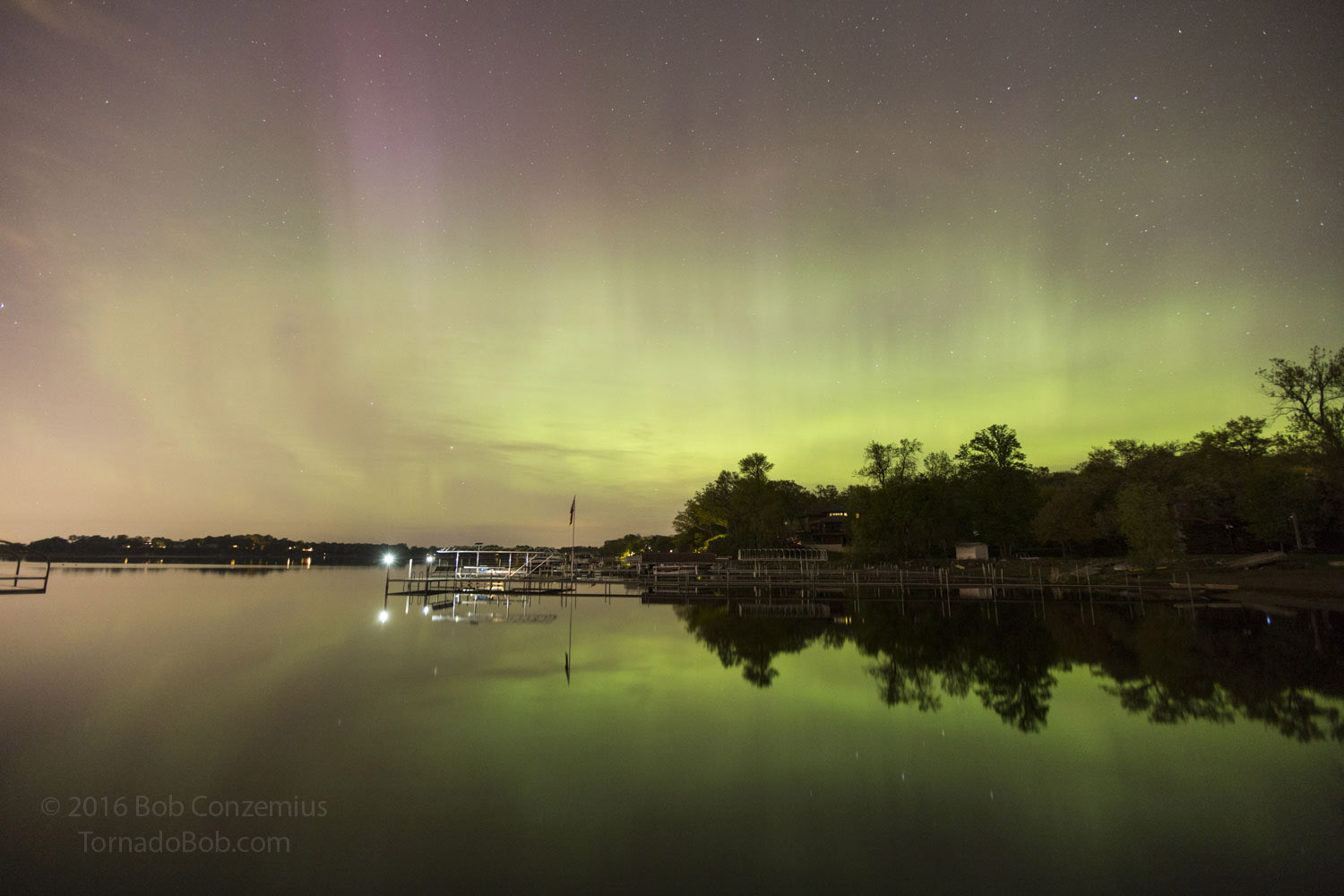Mother's Day Auroras
White Bear Lake, MN
I had just arrived back in Minnesota from my storm chasing trip combined with a business trip, and I was stopping by my parents' place in the Twin Cities to spend the night and spend time with my Mom for Mother's Day. Right before we were heading to bed, out of habit, I pulled up the solar wind plot on my phone. It's actually more of a reflex at this point, but what I saw made me pay attention to what I had just done. The conditions looked good for auroras, so instead of going to bed (Mom and Dad still did that), I walked outside to check for the auroras.
I was on the eastern shore of the lake, so that meant I had to go out on the dock to get a view of the northern sky. The shoreline curved westward to my north, so I had to go to the very end of the dock to get the best view of the northern horizon. My view from that spot was partially blocked by a boat lift, and I could only see a little bit of faint green at first.
| First view of the northern horizon with a little bit of green. |
I could really barely see anything, which is not too much of a surprise given the anthropogenic light. A look to the southwest, toward the heart of the Twin Cites, shows that the light pollution is much worse in that direction. It's hard to appreciate the night sky from the middle of a metropolitan area. This light contamination to my southwest had the advantage, however, of illuminating the foreground when looking north.
| Anthropogenic light haze over the Twin Cities. |
Eventually, the auroras intensified to a level more consistent with the solar wind conditions, and I could see a better-defined auroral arc. It was now high enough in the sky that it arced above the trees immediately to the north, so I could retreat to the middle section of the dock.
| The pre-substorm auroral arc. |
The auroras can maintain this configuration for a while, but it usually doesn't go more than an hour or two this way before one of two things happens. The solar wind Bz can go back north, causing the auroras to gradually fade out. This does not happen very often. The other possibility is that a substorm will ensue, and the auroras will brighten up and develop a lot of structure. Sometimes, this transition is very rapid, occurring in just a handful of seconds. Tonight, it was a little more gradual, and there wasn't a lot of fast movement, but there was still some nice structure.
 |
|---|
| Beginning of the modest auroral substorm. |
It was time to change the lens to a wider angle. I swapped from my 24-70mm zoom to the 16-35mm zoom. My normal aurora lens, the 24mm fixed, was at home in Grand Rapids because I did not plan on shooting auroras before I returned there. Not a big deal. The 24-70mm is f2.8, and it does a great job.
 |
|---|
| Peak of the substorm. This shot is wide (16mm full frame), and the tops of the auroral columns are very high now, above the North Star. |
I didn't want to be too disruptive, so I decided to call it quits as soon as I noticed the auroras fading, which they typically do within about half an hour after the start of the substorm. As they fade, they usually spread over a larger part of the sky and rapid waves of pulsing light move through the more amorphous structures at this point in the storm. I took one more shot of them.
 |
|---|
| The later stage of the substorm. |